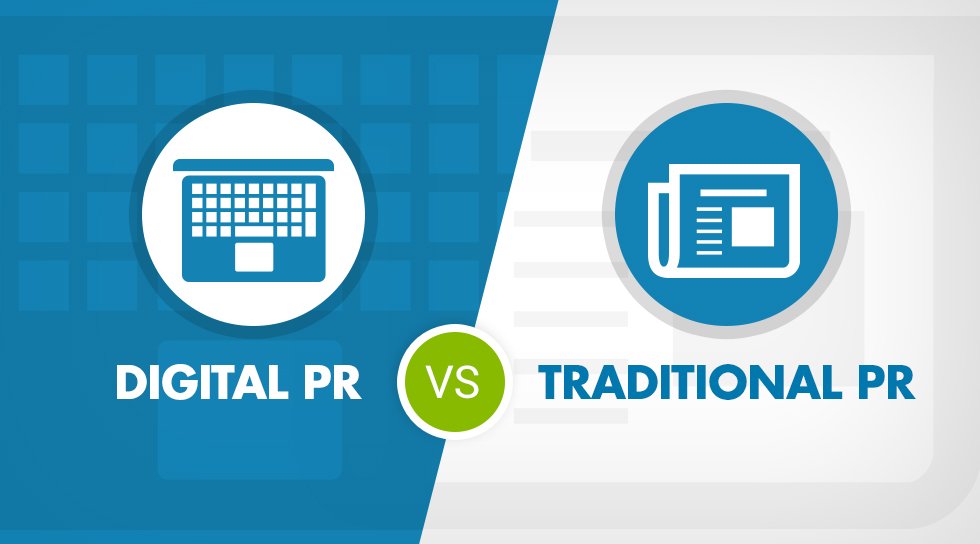In 2025, brands face a crucial choice between traditional public relations (PR) and digital PR strategies for building visibility, engaging audiences, and driving growth. Both approaches aim to boost a brand’s reputation, but they do so using very different tools and channels. This blog will explore the strengths, weaknesses, and evolving role of digital PR and traditional PR, helping marketers decide which works better in today’s competitive environment.
Understanding Traditional PR
Traditional PR relies on offline media platforms such as newspapers, magazines, TV, radio, and physical events. It is deeply rooted in relationship-building with journalists and influencers from legacy media. Storytelling in traditional PR often revolves around press releases, interviews, and press conferences.
Strengths include:
-
Wide reach among mass audiences through popular print and broadcast media
-
Established trust and credibility with older demographics
-
Powerful during product launches, awards, and major corporate announcements
Limitations:
-
Long lead times for media placement and slower response to breaking news
-
Difficult to measure ROI precisely beyond media impressions and estimated ad value
-
Limited targeting and interaction capabilities
The Rise of Digital PR
Digital PR focuses on online platforms—news websites, blogs, social media, podcasts, and influencer networks. It employs data-driven storytelling, AI-powered monitoring, and SEO-centric campaigns to amplify brand reach quickly and measurably.
Key advantages of digital PR:
-
Real-time engagement and fast pivoting of messaging based on trends
-
Precise targeting of niche audiences and micro-communities
-
Strong measurement capabilities through backlinks, referral traffic, social metrics, and sentiment analysis
-
Enhanced SEO benefits improving Google rankings and authority
-
Ability to build authentic, human-to-human relationships with influencers and content creators
Comparing Key Features: Digital PR vs Traditional PR
| Feature | Traditional PR | Digital PR |
|---|---|---|
| Channels | Print, TV, Radio, Events | Websites, Blogs, Social Media, Podcasts |
| Audience Reach | Broad, Mass media based | Niche & Mass, Targeted based |
| Speed & Agility | Slow, pre-planned | Fast, real-time |
| Measuring ROI | Difficult, estimated values | Accurate, data-driven KPIs |
| Engagement | One-way, limited interaction | Two-way, interactive |
| Cost | Often higher, resource-heavy | Cost-efficient, scalable |
| SEO Benefits | None | Direct SEO impact through backlinks |
When to Use Traditional PR
Traditional PR is invaluable when the goal is to reach wide audiences via reputable media outlets or establish a brand presence in high-authority print and broadcast channels. It works best for:
-
Launching flagship products or large corporate announcements
-
Events that require physical presence or mass media coverage
-
Targeting older or mainstream audiences less active online
When to Choose Digital PR
Digital PR is ideal for brands that want to engage dynamically with their audience, improve search rankings, and respond quickly to market trends. It suits:
-
Startups and tech companies needing fast growth and measurable results
-
Campaigns relying on influencer partnerships and social media buzz
-
Brands seeking cost-effective marketing with data-driven insights
Integrating Both for Maximum Impact
The future of PR is integration, leveraging the strengths of both traditional and digital channels. A hybrid approach creates synergy that maximizes reach and engagement. For example:
-
Use traditional press launches amplified by digital content marketing
-
Leverage social media influencers to extend print campaign messages
-
Combine offline event coverage with real-time digital audience interaction
Trends Shaping PR in 2025
-
AI and Predictive Analytics: Monitoring brand sentiment and anticipating PR crises early
-
Micro and Nano Influencers: Harnessing niche voices with loyal followers
-
Personalized Storytelling: Tailoring content to specific audience segments
-
SEO and PR Collaboration: Driving brand visibility through high-quality backlinks
-
Real-Time Crisis Management: Immediate online response capabilities
Conclusion
In 2025, neither digital PR nor traditional PR alone is sufficient to dominate the brand reputation game. Digital PR offers speed, targeting, and measurable ROI that are unmatched, making it essential for modern brands. However, traditional PR still holds value for broad reach and credibility in mainstream media. Savvy marketers should adopt a balanced, integrated approach, blending the best of both worlds to achieve comprehensive brand visibility and engagement.

